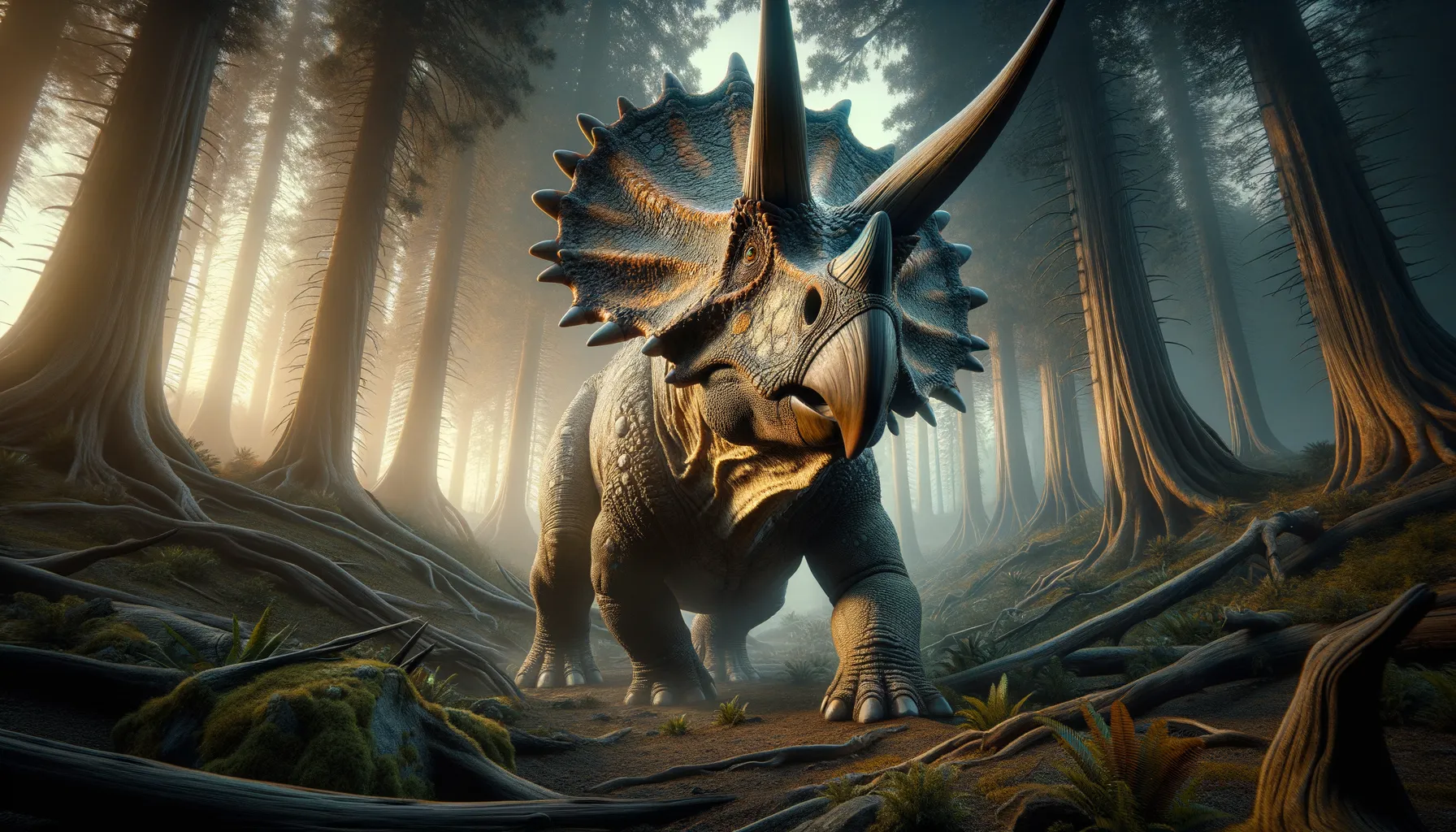
Utahceratops
Horned giant of North America's past.
Period
Cretaceous
Length
Roughly 6-7 meters (20-23 feet) long.
Height
Around 2.5 meters (8.2 feet) at shoulders.
Weight
Approximately 3,000 kilograms (6,600 lbs).
Utahceratops, a hefty ceratopsid dinosaur, roamed the lush regions of what is now North America during the Late Cretaceous period. This herbivorous giant was a part of the remarkable group of horned dinosaurs known as ceratopsians. Characterized by a large frill and prominent brow horns, the Utahceratops fit seamlessly into its ecosystem, using its impressive physical traits for defense and display. Its fossil remains provide crucial insights into ceratopsian diversity and evolution.
Diet
As a herbivore, Utahceratops primarily fed on low-growing vegetation such as ferns, cycads, and conifers. Its beak-like mouth was well-adapted for shearing plant material, allowing it to efficiently consume a variety of tough plants.
Hunting
Utahceratops did not hunt, as it was a plant-eating dinosaur. Instead, it foraged for its food, likely moving in herds to find abundant plant life and avoid predators.
Environmental challenges
Utahceratops faced challenges typical of its era, such as fluctuating climates which affected food availability. The dinosaur also needed to avoid predators like tyrannosaurs, which roamed the same regions. Natural disasters, such as volcanic activity or floods, could have occasionally threatened their habitats, forcing them to adapt to changing landscapes.
Speed
Relatively slow, suited for grazing.
Lifespan
Estimated around 70 to 80 years.
First discovery
Discovered in Utah, USA, in 2006.
Fun Facts
- Utahceratops lived around 76 million years ago during the Late Cretaceous period.
- This dinosaur belonged to the ceratopsian family, known for their impressive head frills and horns.
- Utahceratops had a large skull with a broad frill, and it had at least five horns on its face and above its eyes.
- The name 'Utahceratops' means 'horned face from Utah,' as its fossils were discovered in the state of Utah, USA.
- Utahceratops was a herbivore, meaning it fed on plants, possibly using its beak to nip off leaves and other vegetation.
- It was a large dinosaur, estimated to have been about 18 to 22 feet long, roughly the size of a modern-day rhinoceros.
- Utahceratops is a relatively recent discovery, having been officially named and described in 2010.
Growth and Development
The Utahceratops likely exhibited a growth pattern common among ceratopsians, with rapid juvenile growth slowing as it reached adulthood. It developed its characteristic frill and horns as it matured, which were likely used for defense and attracting mates. These features also played roles in establishing dominance within their social groups.
Habitat
During the Cretaceous period, Utahceratops inhabited lush lands with abundant vegetation, a result of the warm, humid climate of the time. Its environment consisted of floodplains interspersed with rivers and lakes, providing plentiful grazing opportunities. This rich ecosystem supported a diverse array of both herbivorous and carnivorous dinosaurs.
Interaction with other species
Utahceratops likely coexisted with other herbivorous dinosaurs, possibly forming mixed herds for greater protection against predators. Its presence in the ecosystem would have contributed to the dynamic balance of plant-eating giants and their relationships with the surrounding flora. Predatory species, such as tyrannosaurs, would have seen Utahceratops as a potential food source.
Natural lifespan
In favorable conditions, it could live up to 70 or 80 years.
Reproduction
Like most dinosaurs, Utahceratops reproduced by laying eggs. It likely engaged in specific mating rituals, possibly involving displays using its horns and frill to attract mates. Parental care could have included guarding nests and young to ensure their survival in the harsh prehistoric environment.
Social behaviour
Utahceratops may have been a social dinosaur, living in groups that provided safety in numbers against predators. Its herd dynamics would have included social hierarchies, likely influenced by size and horn structure. Communication among these dinosaurs might have included visual displays and vocalizations.
Fossil locations
Fossil remains of Utahceratops have primarily been found in the Kaiparowits Formation in southern Utah, providing significant insights into the Late Cretaceous ecosystems of North America. These discoveries contribute to the understanding of dinosaur diversity and distribution during this period.
